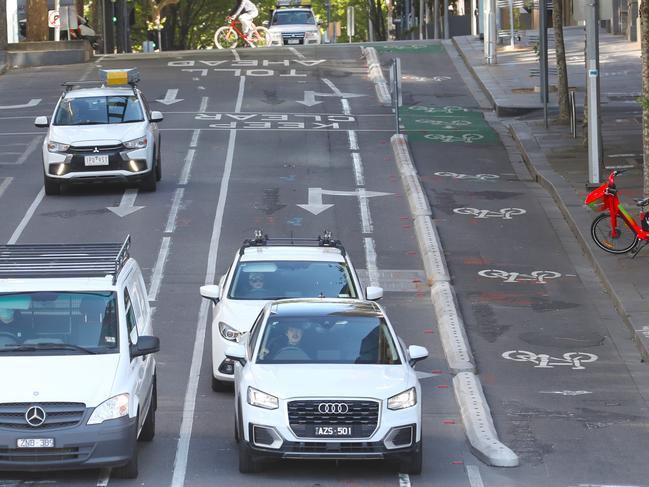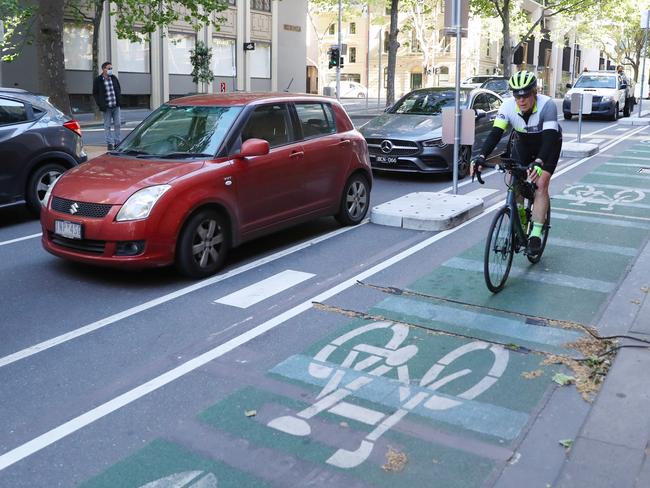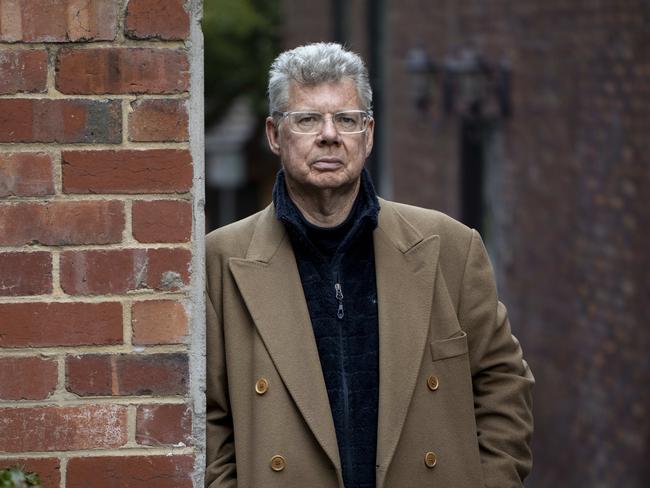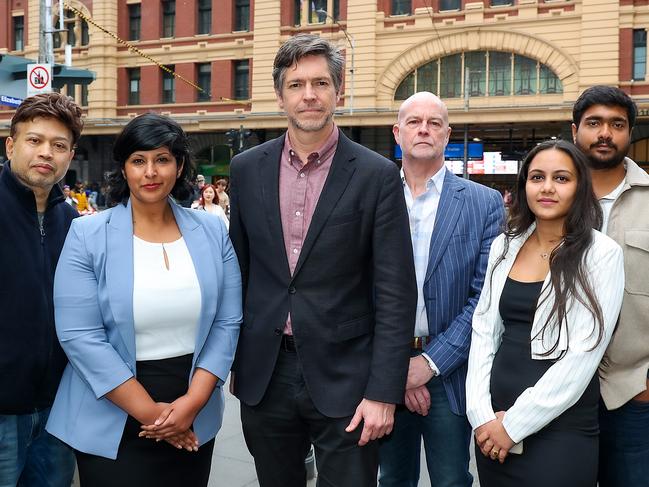City of Melbourne’s bike lane rollout bankrolled by pandemic recovery fund
A $100m recovery scheme aimed at kick-starting the city economy post-pandemic by paying for events and helping businesses was also used to rollout bike lanes and complete street projects.
Victoria
Don't miss out on the headlines from Victoria. Followed categories will be added to My News.
A fund established to aid central Melbourne’s pandemic recovery was used to bankroll the installation of controversial bike lanes throughout the CBD.
Melbourne City Council took $10m from the City Recovery Fund for the lanes that were installed while the state was in lockdown during 2020 and 2021.
The $100m recovery scheme, funded equally by the council and the state government, aimed to kick-start the city economy by paying for events and helping businesses, especially in the retail and hospitality sector.

But internal documents, obtained by the Herald Sun under Freedom of Information laws, reveal that the recovery fund was used for street projects, such as the bike lane rollout and a $2.6m program for streetscape improvements at the southern end of Elizabeth St.
The biggest spend from the fund was $10m for the 40km of bike lanes which were installed from June 2020, according to an analysis by this masthead.
The council paused the rollout in 2024 following an outcry from traders, shoppers and city workers.
The council report of the funding also conceded that the public had been left out of the bike lane debate.
“The rapid rollout of accelerated kerbside bike lanes during the lockdown meant there was limited opportunities for meaningful community engagement,’’ the report said.
Normally, road and infrastructure projects are paid for through the council’s capital works budget.

The recovery fund also helped pay for headline events such as Melbourne Fashion Week ($1.9m), Moomba in 2021 ($3.8m) and Christmas in 2020 ($5m).
Another big chunk of recovery fund money was dedicated to small business reaction grants, totalling $8.9m from September 2020 to June 2021.
A total of 1222 businesses received the grants – at an average of $7300.
Successful applicants included Caterina’s Cucina e Bar, Blender Studios, Bar Americano and Monster Threads.
Almost $3m was spent on street cleaning and graffiti removal, while $5.5m was provided for support to struggling Queen Victoria Market traders.
The $3.34m city reactivation grants also provided cash in 2021 for the Yarra River zip line ($250,000), The Lume at MCEC ($500,000) and the Rising arts festival ($250,000).

Small Business Australia executive director Bill Lang said the expectation was that the recovery fund was to support businesses and encourage people back to the city.
“But more than 10 per cent of that recovery money has ended up being spent on capital works projects,’’ he said.
“It’s just ridiculous and incredibly disappointing that the funds were used for the bike lane strategy.’’
Mr Lang said the lack of transparency over how the money was spent was also concerning.
“This is an opportunity for the Lord Mayor to improve the council’s disclosure and accountability over how ratepayers money is being spent.’’
Lord Mayor Nick Reece was invited to comment but instead a council spokesperson said businesses and events received the lion’s share of the $100m recovery fund “which created local jobs and economic activity’’.
“As people changed their travel habits, creating more pedestrian-friendly spaces and improving transport options became crucial initiatives for economic recovery,” the spokesperson said.

The council has said that the public realm improvements were designed to encourage more people to visit the city, by making it more safe and accessible.
It added that there was increased demand for bike infrastructure during the pandemic and beyond, while the Elizabeth St revamp was to provide better pedestrian access to public transport hubs.
The council document said bike lanes were introduced in response to lockdowns.
“This initiative implemented the accelerated delivery of protected bike lanes to meet the increased demand of people riding bikes during the COVID-19 pandemic,’’ it said.
It also reported that feedback and submissions from the public over the lanes led to about 200 adjustments to the on-road infrastructure.
It also said that across metropolitan Melbourne, 55 per cent of people supported the installation of protected bike lanes in the city, but no supporting evidence was provided.


